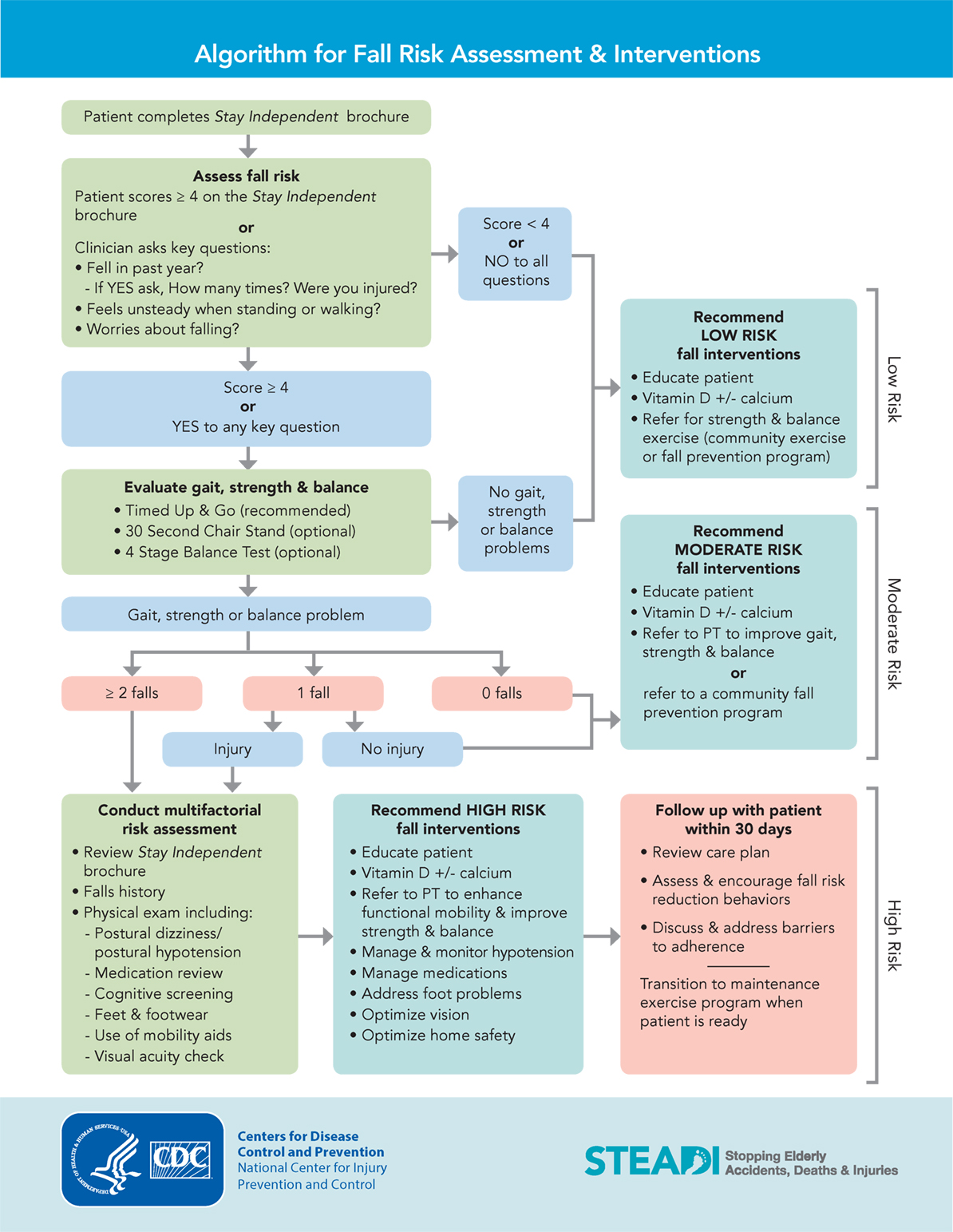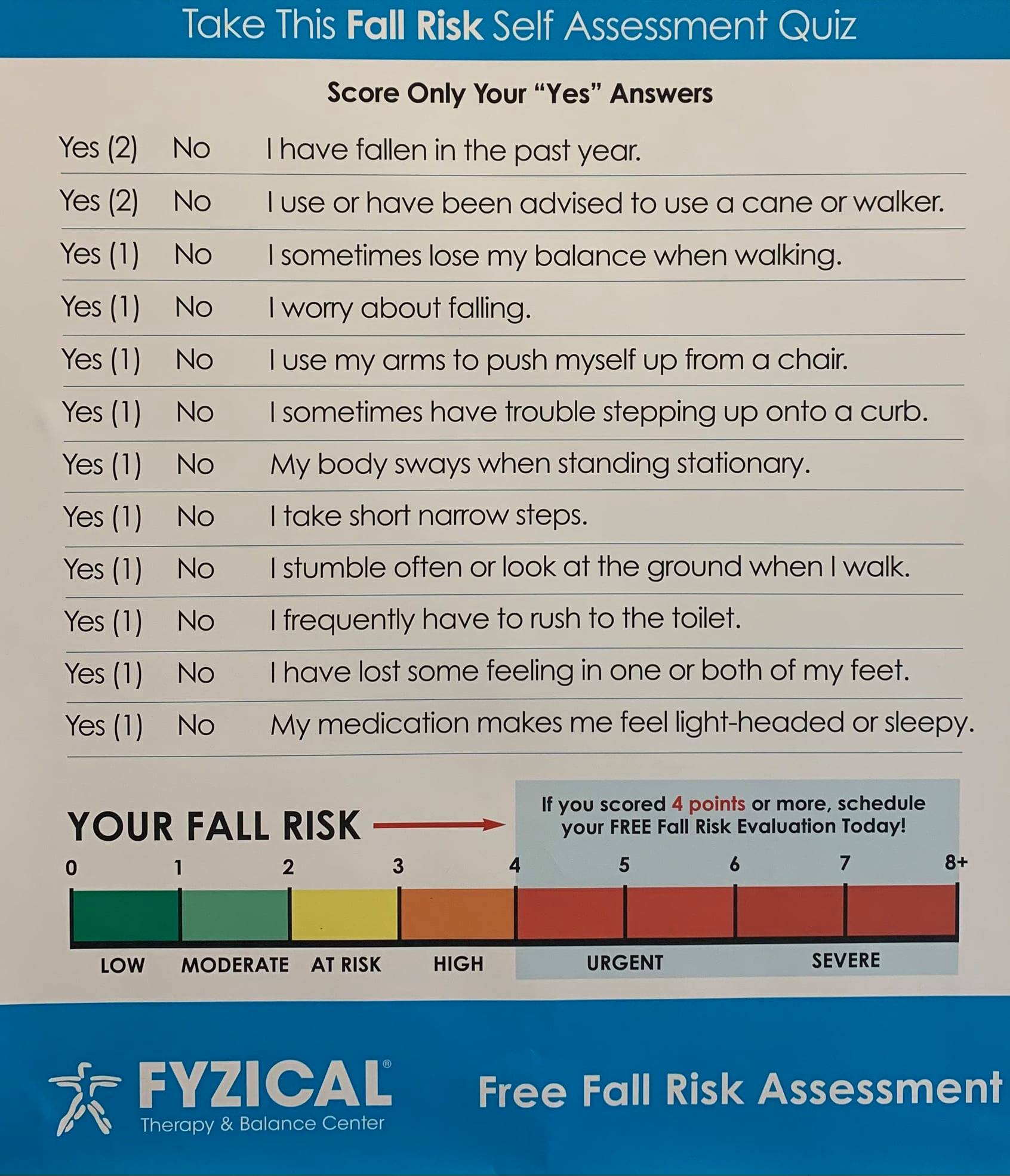Not known Facts About Dementia Fall Risk
Not known Facts About Dementia Fall Risk
Blog Article
How Dementia Fall Risk can Save You Time, Stress, and Money.
Table of ContentsExcitement About Dementia Fall Risk9 Simple Techniques For Dementia Fall RiskThe Main Principles Of Dementia Fall Risk The Ultimate Guide To Dementia Fall Risk
A fall threat assessment checks to see how likely it is that you will drop. It is mostly provided for older grownups. The evaluation usually includes: This consists of a series of inquiries regarding your overall wellness and if you have actually had previous falls or troubles with equilibrium, standing, and/or walking. These tools examine your stamina, balance, and stride (the means you walk).Treatments are suggestions that may reduce your risk of dropping. STEADI includes 3 steps: you for your danger of falling for your threat elements that can be boosted to try to avoid falls (for example, equilibrium troubles, damaged vision) to lower your threat of dropping by making use of reliable techniques (for example, supplying education and learning and sources), you may be asked numerous inquiries including: Have you fallen in the previous year? Are you fretted concerning falling?
If it takes you 12 seconds or even more, it might mean you are at greater danger for an autumn. This examination checks strength and equilibrium.
Relocate one foot halfway ahead, so the instep is touching the large toe of your other foot. Move one foot completely in front of the various other, so the toes are touching the heel of your various other foot.
Dementia Fall Risk for Dummies
A lot of falls occur as an outcome of multiple contributing variables; for that reason, handling the danger of dropping begins with identifying the elements that add to drop danger - Dementia Fall Risk. Some of one of the most pertinent risk variables include: History of prior fallsChronic clinical conditionsAcute illnessImpaired gait and balance, reduced extremity weaknessCognitive impairmentChanges in visionCertain high-risk medications and polypharmacyEnvironmental aspects can additionally increase the threat for falls, consisting of: Inadequate lightingUneven or damaged flooringWet or unsafe floorsMissing or harmed handrails and grab barsDamaged or poorly equipped equipment, such as beds, mobility devices, or walkersImproper use assistive devicesInadequate guidance of the people staying in the NF, consisting of those who display hostile behaviorsA successful autumn threat monitoring program requires an extensive clinical analysis, with input from all members of the interdisciplinary team

The treatment right here plan ought to likewise consist of interventions that are system-based, such as those that promote a risk-free atmosphere (suitable lights, handrails, get hold of bars, etc). The efficiency of the interventions should be examined regularly, and the care plan revised as required to show changes in the loss risk evaluation. Carrying out a loss threat administration system making use of evidence-based best technique can minimize the frequency of falls in the NF, while limiting the possibility for fall-related injuries.
4 Simple Techniques For Dementia Fall Risk
The AGS/BGS guideline advises evaluating all grownups matured 65 years and older for autumn risk yearly. This screening is composed of asking individuals whether they have dropped 2 or even more times in the past year or sought clinical focus for a loss, or, if they have not dropped, whether they really feel unsteady when walking.
People that have actually fallen once without injury needs to have their balance and stride assessed; those with gait or equilibrium abnormalities ought to receive added assessment. A history of 1 autumn without injury and without stride or balance problems does not require further analysis beyond ongoing yearly autumn threat testing. Dementia Fall Risk. A loss danger assessment is called for as component of the Welcome to Medicare exam

The Ultimate Guide To Dementia Fall Risk
Recording a drops history is one of the top quality indications for fall avoidance and management. Psychoactive medicines in particular are independent predictors of drops.
Postural hypotension can commonly be relieved by reducing the view dose of blood pressurelowering medicines and/or stopping medications that have orthostatic hypotension as a negative effects. Use above-the-knee assistance hose pipe and copulating the head of the bed boosted may additionally home reduce postural decreases in high blood pressure. The preferred aspects of a fall-focused checkup are shown in Box 1.

A TUG time greater than or equal to 12 secs recommends high autumn threat. Being incapable to stand up from a chair of knee elevation without using one's arms indicates raised fall risk.
Report this page